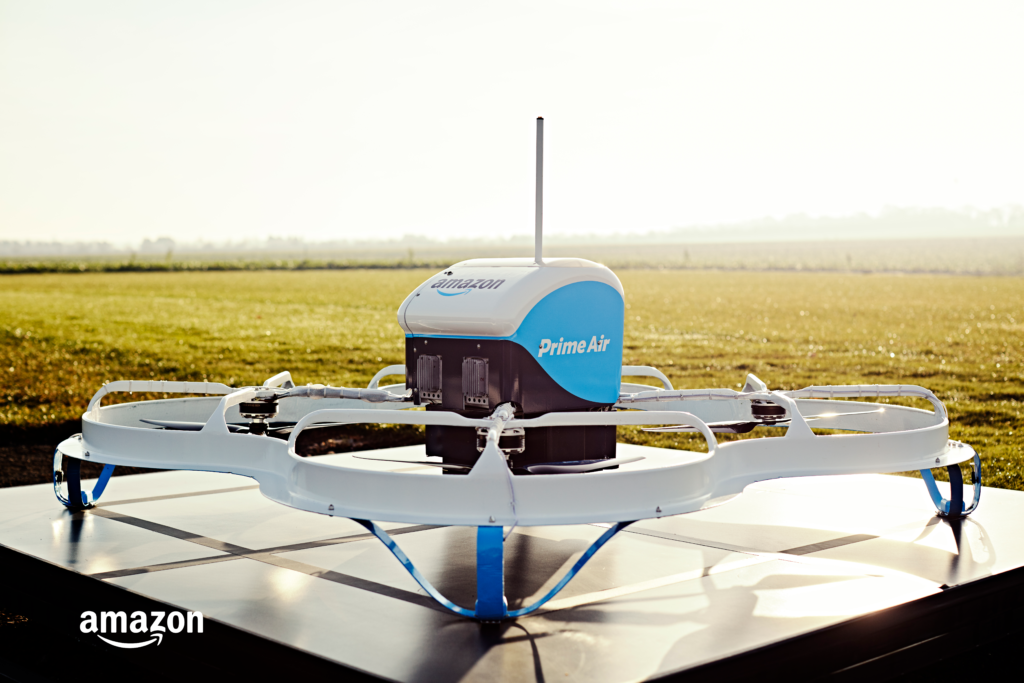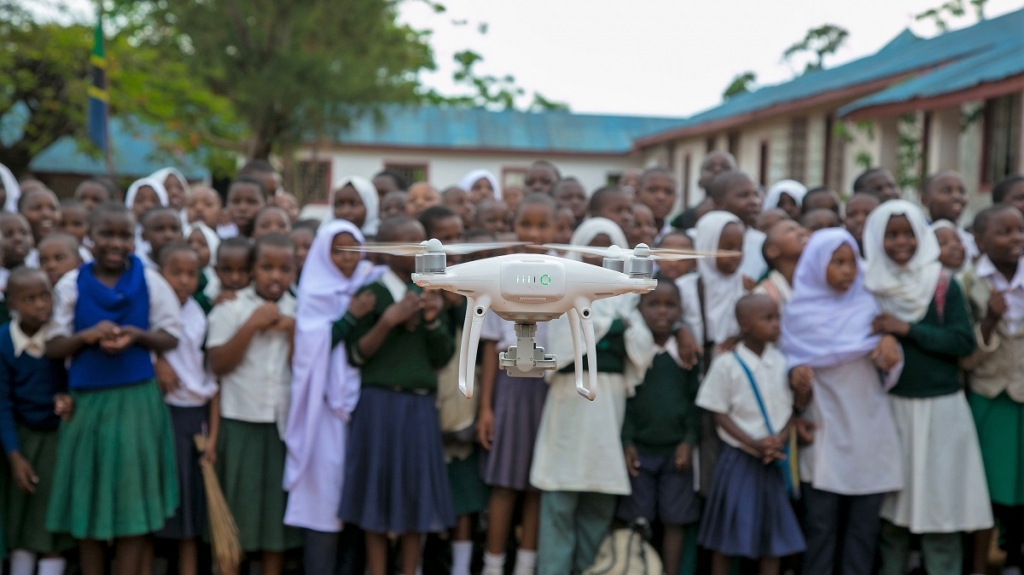As we discuss in our ongoing 3D Printing Drone Swarms series, additive manufacturing (AM) will play an increasing role in the production of all manner of semi-sentient robots. This has been demonstrated by unmanned aerial vehicles (UAVs), which are now being made in part with 3D printing for lightweight, custom designs. For this reason, we expect AM to be used for other drone-style bots as well, often for military purposes.
Previously, we published a series of articles looking into 3D printed drone swarms. We looked at the future of 3D printed drones, how they’ve won wars, unmanned aerial vehicles (UAVs) built so far, why you should 3D print them and the democratization of drones. The central thesis of these stories written in 2020 was that UAV swarms would upend how wars are conducted and leave a whole host of conventional strategies and materiel vulnerable.
Deploying enough drones, you can bring down an aircraft carrier. Recently, UAVs were credited in tipping the balance in Ethiopia’s war with a nearly defeated government bouncing back through the use of drones. The Ukraine war, if it happens, may also be decided through UAVs. An amazing article by Amat Khan also looks at how drones let the U.S. wage war by minimizing its own military deaths, but was fine with the murder of civilians. This was a long-expressed worry, which I’ve mentioned in an article in 2016 and at a Rapid Tech Keynote in 2015.
On the whole, the fact that drones also contain risk, as they make it easier for democracies to kill people overseas is proving to be a very real problem. We’ve focused so far on UAVs, but with drones being so successful and causing so many deaths, it is time to look more deeply at other kinds of unmanned vehicles.
What we’re witnessing is the digitization and robotization of war. This development can upset traditional power balances and change war as we know it. With drones paying such a decisive role on the battlefield, the proof points are now such that not a single military planner wants fewer of them.
3D printing is a widely used technology in drone manufacturing. We’re the best method for making lightweight structures where parts consolidation is a secondary aim. In UAVs, we optimize weight, reduce the number of parts drastically, integrate functionalities and improve. With drones, the regulatory regime is light or not present, so companies can very easily adopt the technology. Iterations are faster and we can inexpensively get from idea to part. Often, we can use our prototypes as final parts and we avoid a lot of up-front and tooling costs. Many 3D printing advantages combine (are “stacked“) in UAVs. Tens of thousands of drone parts are flying today and we’re the logical technology for other prototypes, “special projects” and new production runs.
So far, drones are in the sky, but a number of other similar platforms are being developed, including drones for logistics. As I’ve said earlier, modern militaries are like UPS with guns. In some cases, a warfighter at the front may cost $1 million a day or have up to six or more people supporting them, and each of these people needs protection as well. In theatre, modern armies, such as the U.S. military, pay hundreds to thousands of dollars per kilo to have items located where they need to be.
According to a 2010 Nobils military report (PDF), “A 600 soldier [forward operating base (FOB)] requires a convoy of 22 trucks per day to supply the base with fuel or water and to truck away wastewater and solid waste.” That’s 22 trucks that can be attacked driven by people who also need a base. And that’s just for water and waste. The allied forces had over 100,000 shipping containers in Afghanistan at one point.

To reduce the ever-escalating needs for force protection and make logistics more efficient and safer, UAVs can play a role. In logistics, more autonomous UAVs can be used to deliver cargo to far-off FOBs and isolated troops.
Ever since the Berlin air lift and the French loss of Dien Bien Phu, the possibilities and pitfalls of air supplying remote troops have been apparent. Indeed, although a lot went wrong simultaneously, the Luftwaffe’s inability to supply Stalingrad properly led to the downfall of the city and perhaps the Third Reich, as well. With Stalingrad’s troops needing 300 tonnes a day and the German air force only able to supply 100 to the encircled troops, the battle itself became a forgone conclusion. So, supplying by air is an opportunity and a problem. At Stalingrad, the Luftwaffe lost 488 planes and 1,100 airmen. The loss of the airmen was very debilitating to them since they simply could not replace them fast enough and definitely not with that level of experience in new soldiers.

It’s clear that the business case for UAV supply is that attrition is no biggie. We can always make more drones and the pilots are safe stateside. At the same time, Amazon and other firms are looking to drones to transport parcels. If this becomes more prevalent, then this will enable more transport by UAVs in a military setting, as well. Commercial transport on drones is far likelier to be influenced by privacy and safety concerns by consumers. The laws regarding drones are evolving and differ in every jurisdiction. The World Bank and others are also looking to UAVs for transport in Africa and other places.

Transport UAVs can also be used in multiple roles. The DP 14 above can be used as a transport craft with a payload of 230 pounds and perhaps could be used as a medevac solution in a pinch, too. Missions with downed pilots or isolated troops that need rescue are very costly and dangerous, so this kind of application quickly makes sense. The Black Hawk Down incident and ensuing battle was caused by a single fast rope accident leading to a delay, which caused one helicopter to get shot down, which then caused more to get shot down and, in total, caused many deaths. Sending in expendable aircraft is a good way to avoid such follow-up risk and carnage.
Since transport UAVs share a lot of the same characteristics of armed drones, development is sure to continue. Even without the possible boost from the home delivery market, this is an area that is sure to see a lot more startup activity and investment.
Subscribe to Our Email Newsletter
Stay up-to-date on all the latest news from the 3D printing industry and receive information and offers from third party vendors.
You May Also Like
HILOS Launches Studio OS for AI-Driven 3D Printed Shoe Design
At Milan Design Week, footwear 3D printing startup HILOS has unveiled its latest development, Studio OS. Introduced at the historical Villa Bagatti Valsecchi, the platform is meant to redefine how...
3D Printing Webinar and Event Roundup: April 28, 2024
In this week’s 3D Printing Webinar and Event Roundup, the Ceramics Expo is taking place in Michigan, Stratasys continues its advanced training courses, and SPE is holding a Polymer Characterization...
Initial Speakers and Sponsors Announced for Additive Manufacturing Strategies 2025
Nearly a year away from the event, the Additive Manufacturing Strategies (AMS) 2025 conference is already beginning to take shape. Building upon the success of 2024’s summit, AMS has established...
HP & INDO-MIM Collaborate to Boost Metal 3D Printing in India
HP Inc. and INDO-MIM, a US- and India-based supplier of metal injection molding (MIM) powders and contract manufacturer, have announced that the two companies will collaborate to accelerate additive manufacturing...































